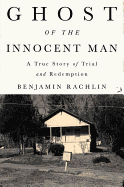
Defense attorney Ed de Torres, the North Carolina Prisoner Legal Services and the Center on Actual Innocence all believed Willie J. Grimes was innocent of the rape for which he was convicted in 1988. Appeals were filed on his behalf, but despite a careless police investigation and suspicious witness identification, no part of his trial created cause for a reversal. The process functioned correctly, but the outcome was wrong. DNA was in its infancy in 1988, and, later, when the Center on Actual Innocence attempted to investigate Grimes's case, they were unable to locate any of the physical evidence from the original trial.
Christine Mumma was a clerk for North Carolina Supreme Court justice Beverly Lake when she became frustrated with cases where individuals' guilt seemed questionable. Ghost of the Innocent Man is the story of Grimes's fight to prove his innocence and Mumma's battle to improve the catastrophic situation of scant recourse when a jury's determination of guilt is wrong. Author Benjamin Rachlin's thorough investigation of the subject provides an astonishing look at the United States justice system that will educate and incense readers. It reads like a legal thriller. His vivid language leads the audience down prison hallways as well as through despairing minds.
Ghost of the Innocent Man proves that Judge Learned Hand was tragically mistaken in 1923, when he stated, "Our dangers do not lie in too little tenderness to the accused. Our procedure has always been haunted by the ghost of the innocent man convicted. It is an unreal dream." No fewer than 2,000 convicted individuals have been exonerated since 1989; the story of Willie J. Grimes illustrates just how dangerous Learned Hand's erroneous belief is. --Jen Forbus, freelancer

